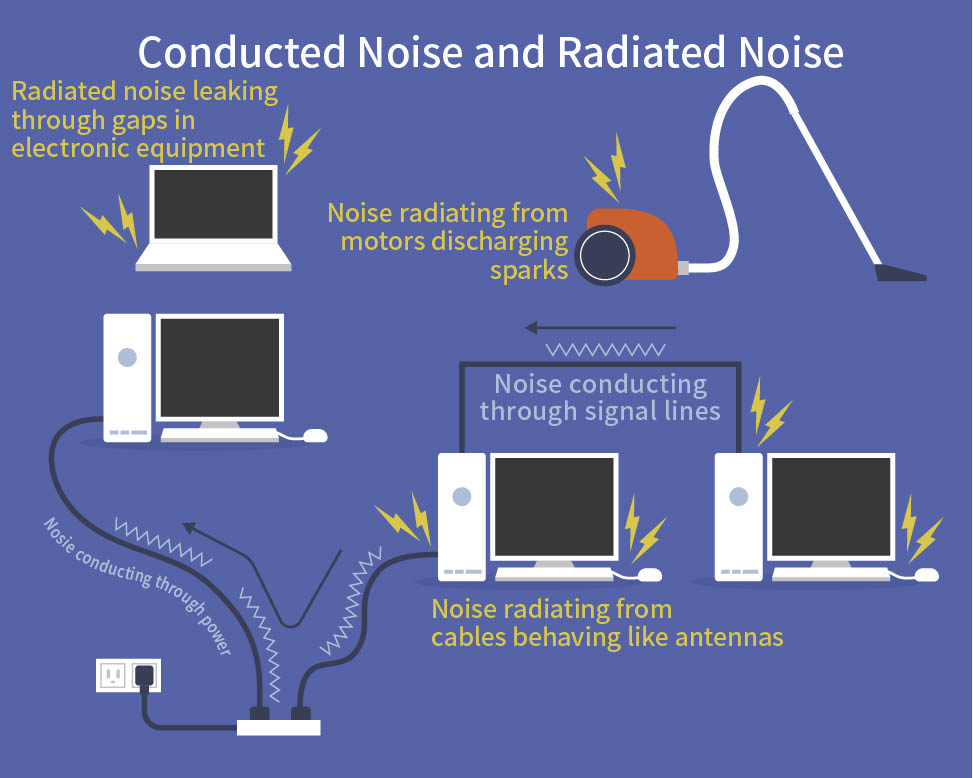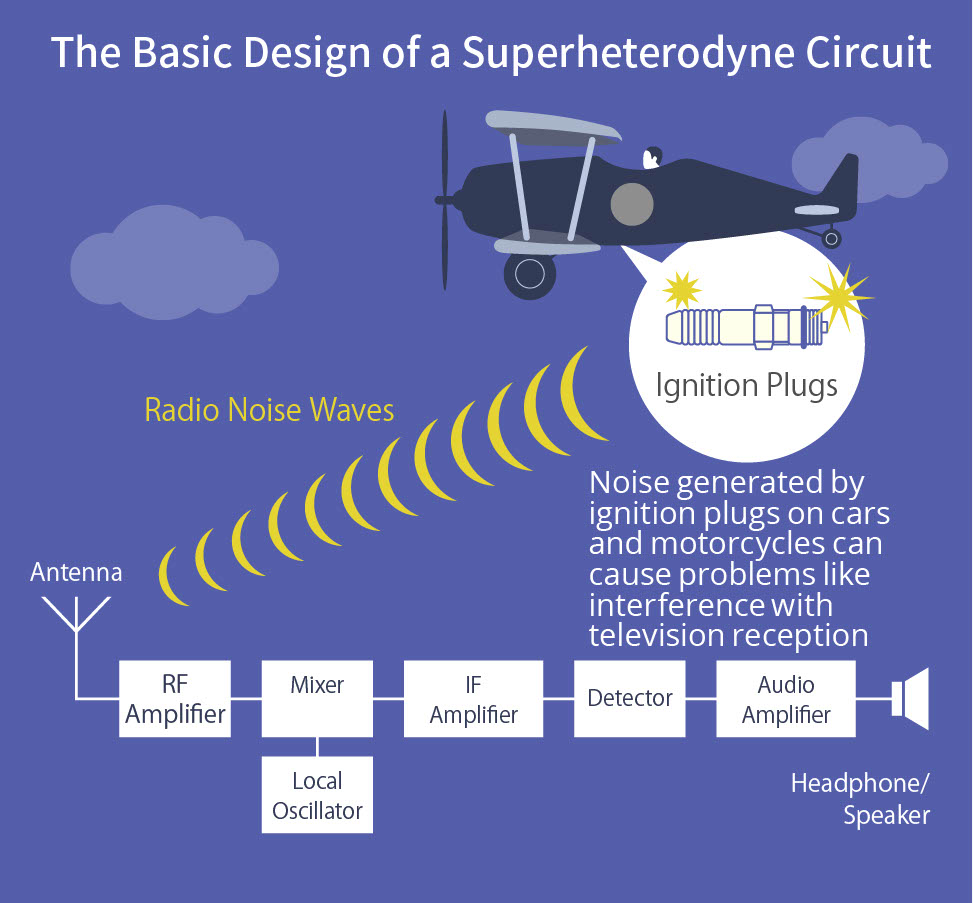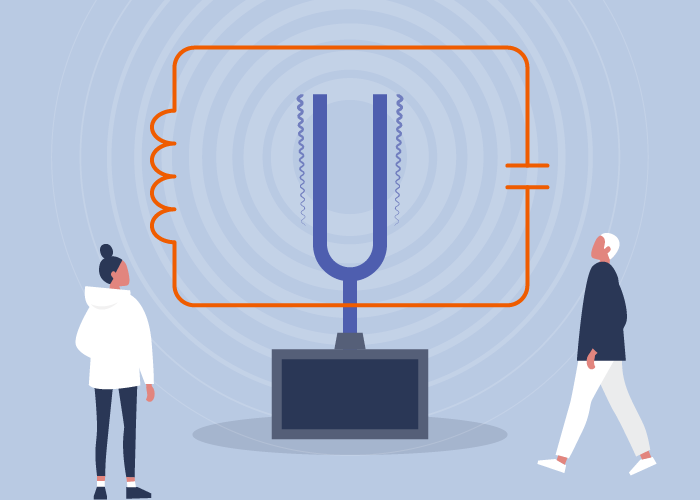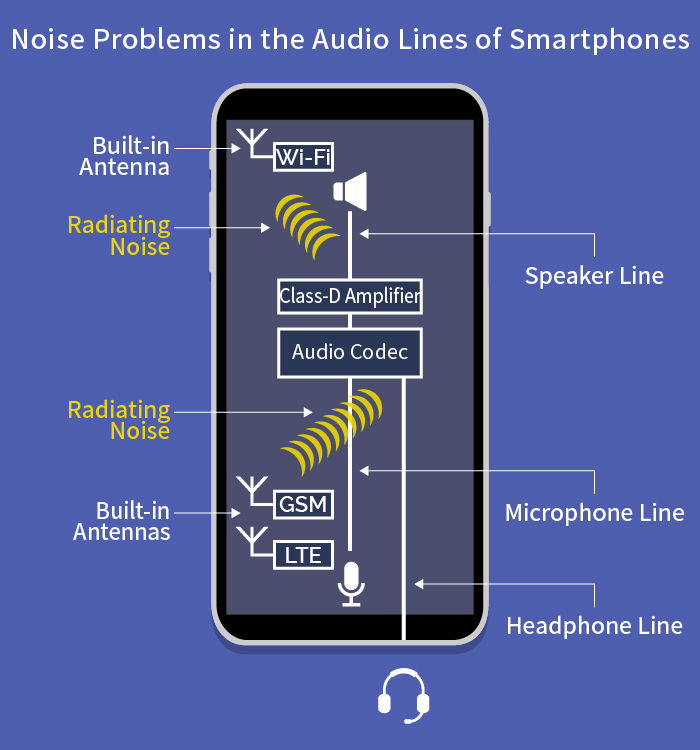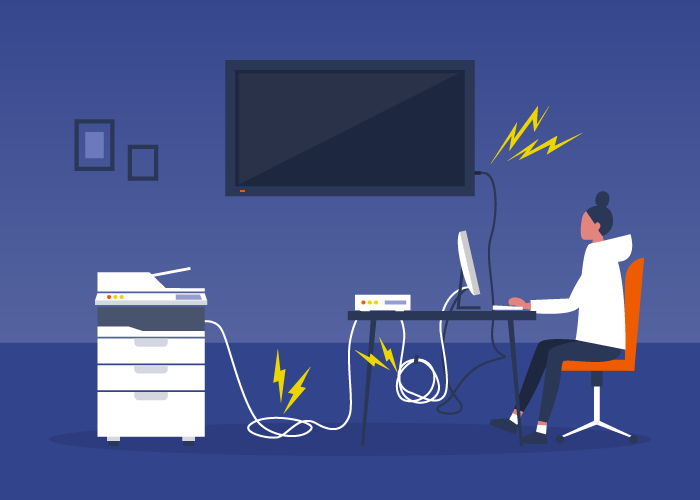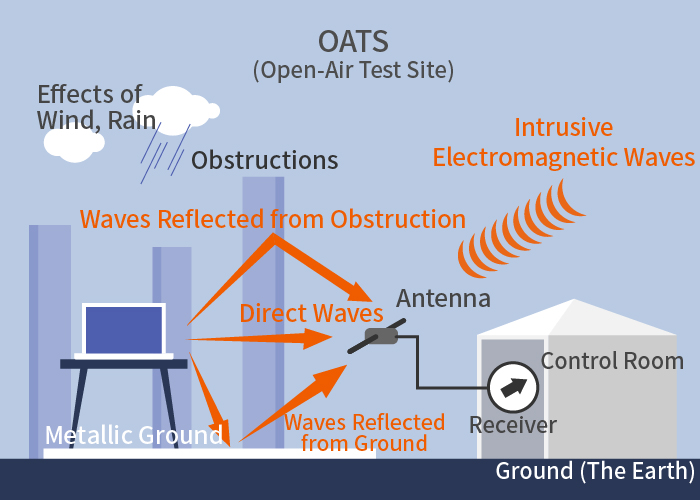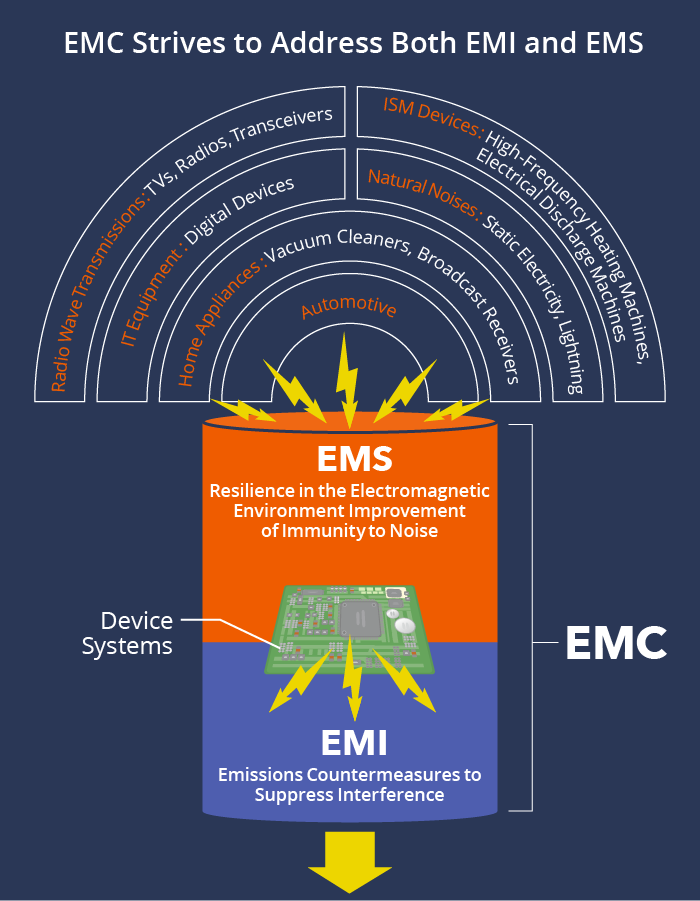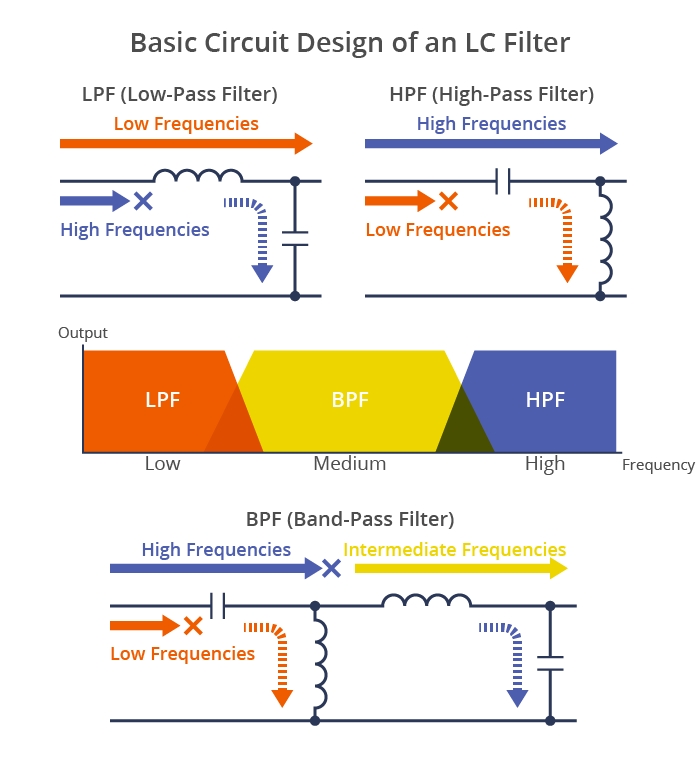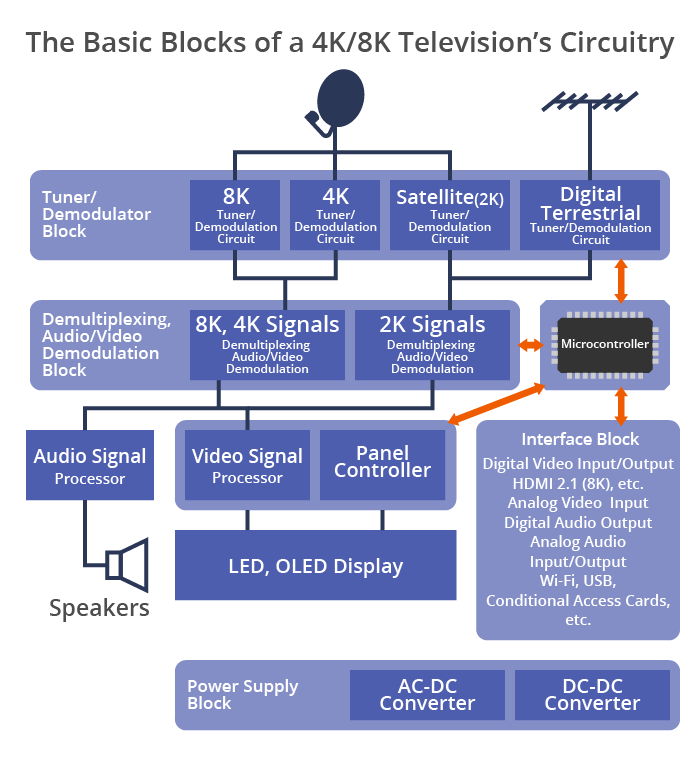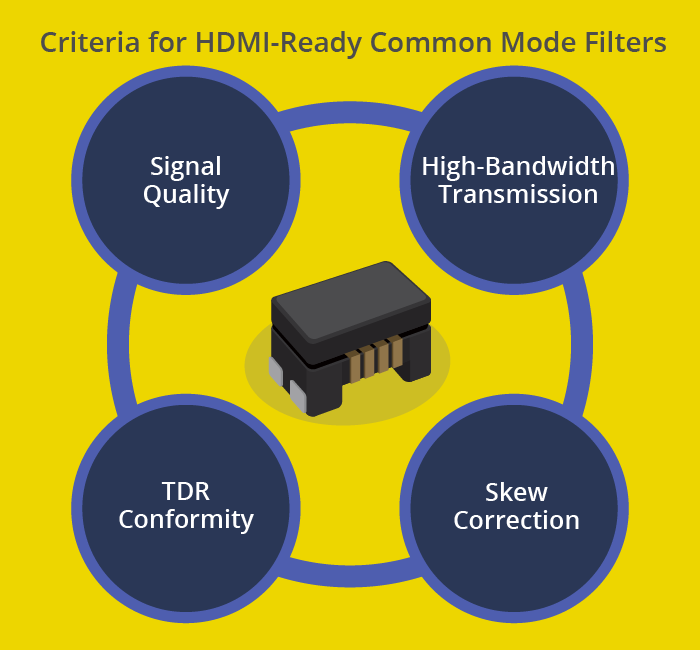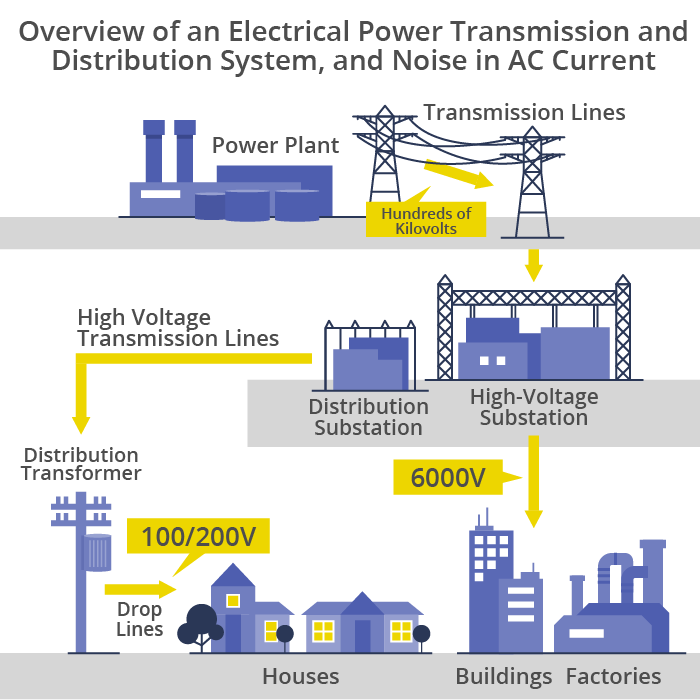
Introduction to Noise (EMC)
In today’s world that depends so much on electronic technologies, properly dealing with electrical noise—known formally as Electromagnetic Compatibility (EMC)—is a critical environmental issue. In order to prevent noise from causing failures and breakdowns, a variety of EMC measures are implemented in automobiles, IT devices, industrial appliances and energy equipment. This series is divided into three sections: The Basics, Components, and Practical Applications. We’ll cover everything from the basics of noise problems to state-of-the-art solutions in an easy-to-understand format.
The Basics
Noise comes in many forms and propagates in many different ways. This section explains the basic principles of noise-related solutions, focusing on the four elements of EMC: shielding, reflecting, absorbing, and bypassing.
Components
In electronic devices, various EMC components—made from ferrite and ceramic materials—need to be used in just the right places. This section will explain the technical keys to implementing effective noise suppression with as few components as possible.
Practical Applications
The appropriate selection and use of EMC components are crucial in keeping up with the increasing functionality of electronic devices. This section will show real-life examples of noise countermeasures found in smartphones, audio-visual equipment, automobiles, and power supplies.




